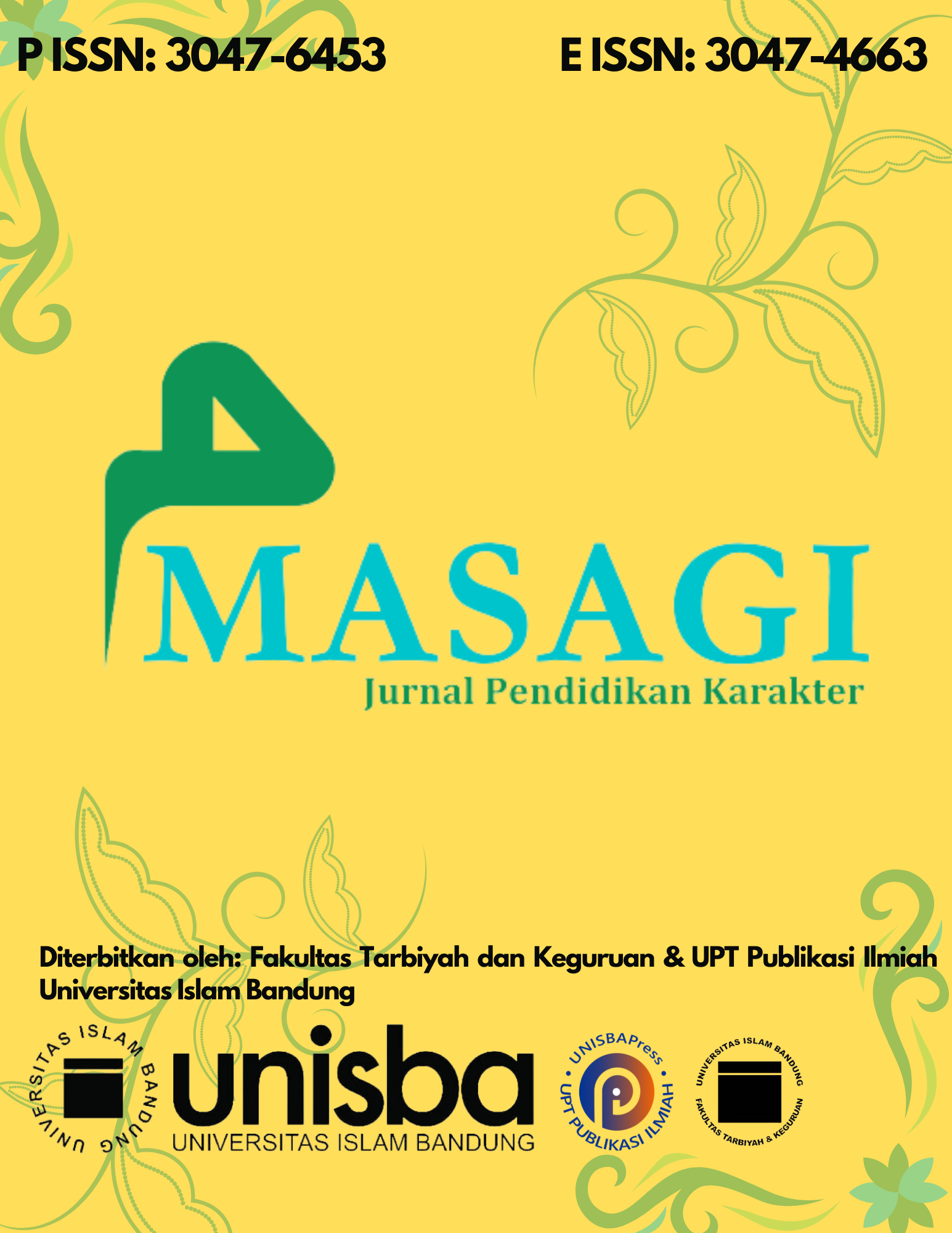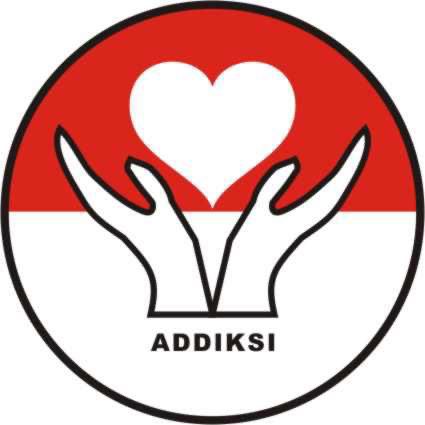HARMONI Profile: Examining Levels and Predictors of Student Well-Being in Indonesia
DOI:
https://doi.org/10.29313/masagi.v1i2.5431Keywords:
Positive Education, PROSPER Framework, Student Well-BeingAbstract
The HARMONI provides a multicomponent approach to measure Indonesia student well-being adapted from the PROSPER framework. We used the measure to describe the overall well-being and the seven components of HARMONI: outcomes, resilience, relationships, purpose, positivity, strengths, and engagement. A cross-sectional study was conducted with socio-demographic and school characteristics as predictors of student well-being. A total of 1579 students from 511 senior high schools completed an online survey. We found that overall well-being based on the HARMONI profile was positive (M=3.92; SD=0.53), with all components showing a trend of optimal well-being. Student well-being is significantly predicted by gender, school area, and school type but not associated with parent income, parent education, grade level, and student major (R2model 1 = .0299). The effect of gender and school type varies by grade level (R2model 2 = .0342;R2model 3 = .0347). The HARMONI can be used not only for measuring well-being but also as a structure for character education. The findings suggest that designing HARMONI-based character education needs to accommodate gender differences, grade levels, school areas, and school types.
References
Abdillah, G. R. (2024). Arah Pendidikan Indonesia dalam Tataran Filsafat Pendidikan dan Karakter. Masagi: Jurnal Pendidikan Karakter, 1(2 November), 124–135. https://doi.org/https://doi.org/10.29313/masagi.v1i2%20November.4593
Ahmadi, S., Heidari, M., Bagherian, F., & Kashfi, A. rosoul. (2016). Adolescence And Development Of Meaning: Comparing The Sources And Dimensions Of Meaning In Life In Adolescent Boys And Girls. Clinical Psychology Studies, 6(23), 149–177. https://www.sid.ir/en/journal/ViewPaper.aspx?ID=543139
Alhamuddin, A., & Murniati, A. (2024). Promoting the Character of Respect for Each Other through the Pancasila Student Profile Strengthening Project (P5): Educational Transformation in the Merdeka Curriculum Era. Masagi: Jurnal Pendidikan Karakter, 1(2 November),180–193. https://doi.org/https://doi.org/10.29313/masagi.v1i2%20November.5440
Arya, T., & Sangwan, S. (2018). A study on psychological well-being of rural and urban adolescents. International Journal of Education and Management Studies, 8(4), 419-423. Retrieved from https://ezproxy.library.dal.ca/login?url=https://www.proquest.com/scholarly-journals/study-on-psychological-well-being-rural-urban/docview/2218170429/se-2
Aviad-Wilchek, Y., & Ne’eman-Haviv, V. (2018). The Relation Between a Sense of Meaning in Life and Suicide Potential Among Disadvantaged Adolescent Girls. International Journal of Offender Therapy and Comparative Criminology, 62(6), 1474–1487. https://doi.org/10.1177/0306624X16684566
Booker, C. L., Kelly, Y. J., & Sacker, A. (2018). Gender differences in the associations between age trends of social media interaction. BMC Public Health, 18(1), 1–12.
Borgonovi, F., & Pal, J. (2015). A Frame Work for the Analysis of Student Well-Being in the PISA 2015 Study : Being 15 In 2015. In OECD Education Working Papers (Issue 140). OECD Publishing. https://doi.org/https://doi.org/10.1787/5jlpszwghvvb-en.
Brigman, G., & Webb, L. (2007). Student success skills: Impacting achievement through large and small group work. Group Dynamics: Theory, Research, and Practice, 11(4), 283–292. https://doi.org/10.1037/1089-2699.11.4.283
Chanfreau, J., Lloyd, C., Byron, C., Roberts, C., Craig, R., Feo, D. De, & Mcmanus, S. (2014). Predicting wellbeing. https://doi.org/10.13140/2.1.3267.4564
Chiu, T. K. F. (2021). Student engagement in K-12 online learning amid COVID-19: A qualitative approach from a self-determination theory perspective. Interactive Learning Environments, 1–14. https://doi.org/10.1080/10494820.2021.1926289
Coledam, D. H., Frotta, B. M., & Nicolai Re, A. H. (2022). General Versus Vocational Education in High School Cross‐Sectional Associations with Student’s Health. Journal of School Health, 92, 570–580. https://doi.org/10.1111/josh.13165
Dalimunthe, K.L.; Susanto, H; and Wedyaswari, M. (2021). Pendekatan Integratif Kesejahteraan Siswa dalam Konteks Pendidikan Karakter di Indonesia. Unpad Pess: Sumedang, West Java.
Dalimunthe, K.L.; Susanto, H; and Wedyaswari, M (2022). A Qualitative Study Exploring The Construct Of Student Well-Being In West Java High School Students. Psychological Research on Urban Society: Vol. 5: No. 2, Article 1. DOI: 10.7454/proust.v5i2.155
Frydenberg, E., Care, E., Freeman, E., & Chan, E. (2009). Interrelationships between coping, school connectedness and wellbeing. Australian Journal of Education, 53(3), 261–276. https://doi.org/10.1177/000494410905300305
González-Carrasco, M., Casas, F., Malo, S., Viñas, F., & Dinisman, T. (2017). Changes with Age in Subjective Well-Being Through the Adolescent Years: Differences by Gender. Journal of Happiness Studies, 18(1), 63–88. https://doi.org/10.1007/s10902-016-9717-1
Habsy, B. A., Hidayah, N., Lasan, B. B., Muslihati, & Fudholi, A. (2019). The development model of semar counselling to improve the self-esteem of vocational students with psychological distress. International Journal of Emerging Technologies in Learning, 14(10), 132–149. https://doi.org/10.3991/ijet.v14i10.10221
Herke, M., Rathmann, K., & Richter, M. (2019). Trajectories of students’ well-being in secondary education in Germany and differences by social background. European Journal of Public Health, 29(5), 960–965. https://doi.org/10.1093/eurpub/ckz049
Kaur, G., Nair, R., & Devi, S. S. (2018). A comparative study of adolescent mental health problems at selected rural and urban senior secondary schools of Haryana. J Nursing Sci Practice, 7(02), 14-19.
Lambert, L., Passmore, H. A., & Holder, M. D. (2015). Foundational Frameworks of Positive Psychology: Mapping Well-Being Orientations. Canadian Psychology, 56(3), 311–321. https://doi.org/10.1037/cap0000033
Liu, W., Mei, J., Tian, L., & Huebner, E. S. (2016). Age and Gender Differences in the Relation Between School-Related Social Support and Subjective Well-Being in School Among Students. Social Indicators Research, 125(3), 1065–1083. https://doi.org/10.1007/s11205-015-0873-1
McKay, M. T., Andretta, J. R., Cole, J. C., & Clarke, M. (2020). Socio-demographic predictors of well-being in United Kingdom adolescents, and the impact of well-being on a range of health-related outcomes. Psychiatry Research, 285(December 2019), 112728. https://doi.org/10.1016/j.psychres.2019.112728
Mirizon, S., & Rosmalina, I. (2021). Secondary school students ’ English literacy achievement based on PISA reading literacy test. 9(1), 165–182. https://doi.org/10.22373/ej.v9i1.10492
Moran, S. (2011). Assessing and Developing Multiple Intelligences Purposefully. Measuring Multiple Intelligences and Moral Sensitivities in Education, 121–133. https://doi.org/10.1007/978-94-6091-758-5_7
Morgan, B., & Simmons, L. (2021). A ‘PERMA’ Response to the Pandemic: An Online Positive Education Programme to Promote Wellbeing in University Students. Frontiers in Education, 6(May), 1–10. https://doi.org/10.3389/feduc.2021.642632
Muhammad, G., Ruswandi, U., Nurmila, N., & Zakiyah, Q. Y. (2023). Implementation of Multicultural Values through the Hidden Curriculum of PAI Subjects in Forming a Peace-loving Character in Junior High Schools. European Journal of Education and Pedagogy, 4(6),113–120. https://doi.org/https://doi.org/10.24018/ejedu.2023.4.6.768
Noble, T., & Mcgrath, H. (2016). The PROSPER School Pathways for Student Wellbeing. Policy and Practices. Springer International Publishing. https://doi.org/10.1007/978-3-319-21795-6
Noble, T., & McGrath, H. (2008). The positive educational practices framework: A tool for facilitating the work of educational psychologists in promoting pupil wellbeing. Educational and Child Psychology, 25(2), 119–134. https://doi.org/https://psycnet.apa.org/record/2009-06944-011
Noble, T., & McGrath, H. (2015). PROSPER: A New Framework for Positive Education. Psychology of Well-Being, 5(1). https://doi.org/10.1186/s13612-015-0030-2
OECD. (2017). PISA 2015 Results (Volume III): Students’Well-Being: Vol. III (A. Schleicher (ed.)). OECD Publishing. https://doi.org/10.1787/9789264273856-en
OECD. (2020). A framework for the analysis of school climate and student well-being. In PISA 2018 Results (Volume III): What School Life Means for Students’ Lives: Vol. III (pp. 35–43). https://doi.org/10.1787/3b42acd8-en
Downloads
Published
How to Cite
Issue
Section
License
Copyright (c) 2024 Miryam Wedyaswari, Hery Susanto, Karolina Lamtiur Dalimunthe

This work is licensed under a Creative Commons Attribution 4.0 International License.
https://creativecommons.org/licenses/by-sa/4.0/

















